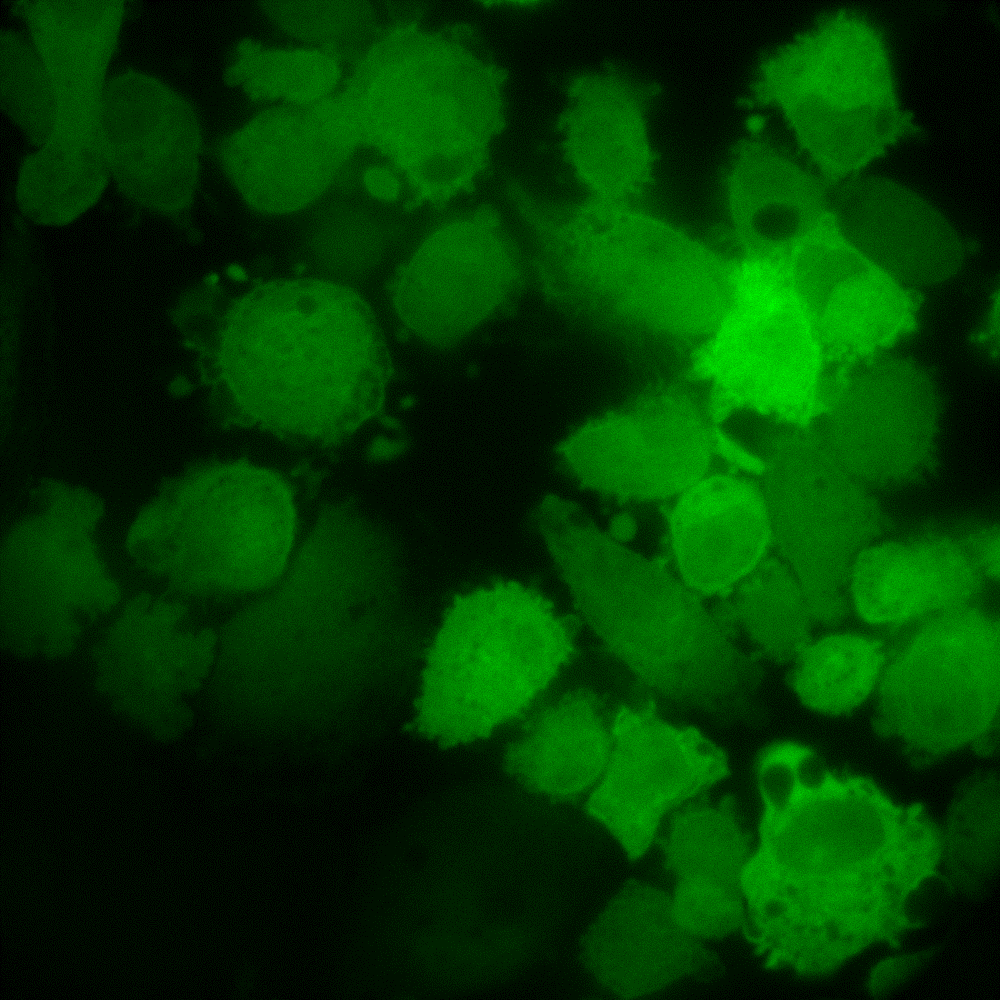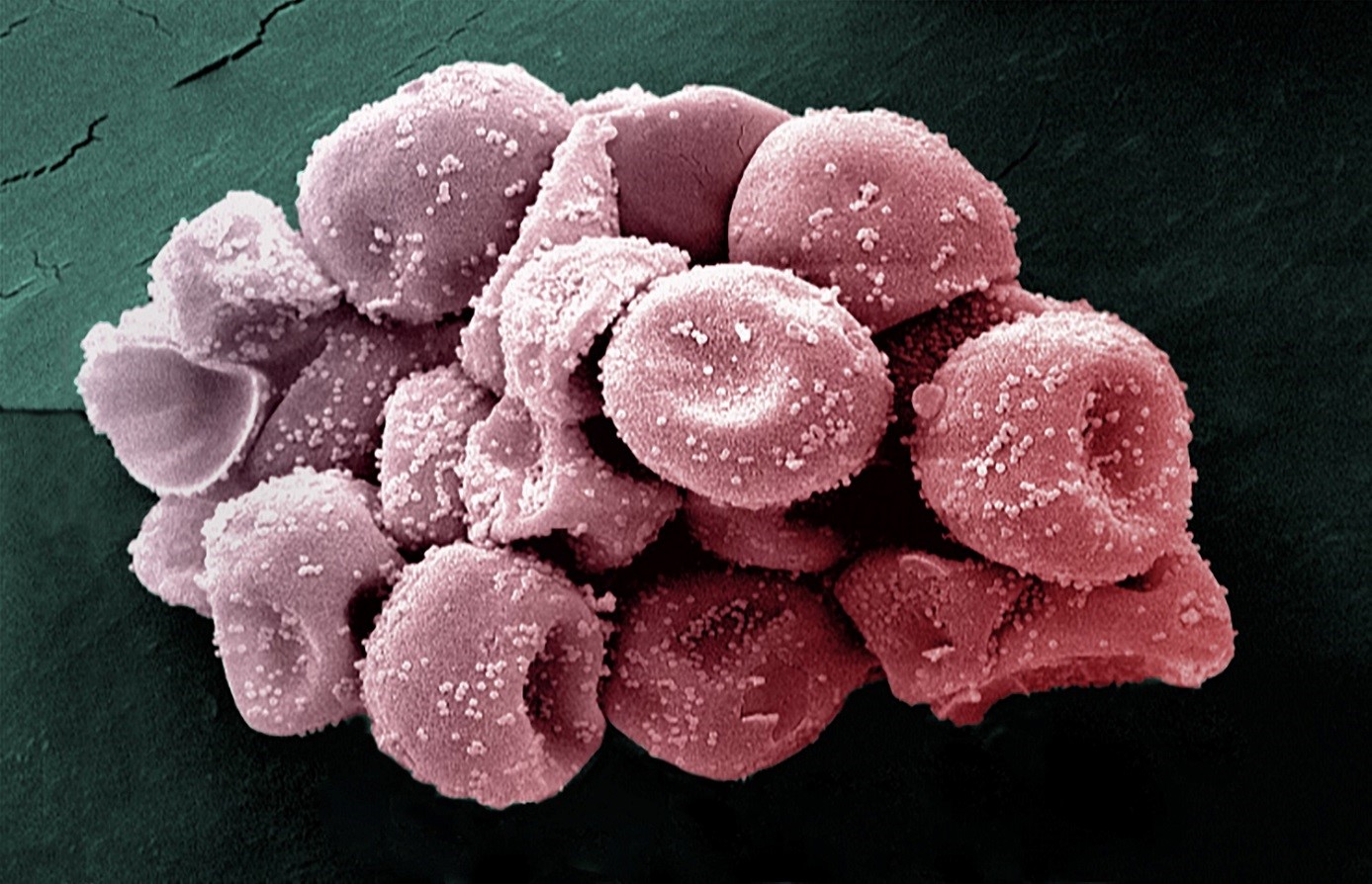Research of our laboratory is mainly related to molecular endocrinology, immunology and to the study of influence of oxidative stress on the organism. At the molecular level, we study the regulatory mechanisms occurring in the immune system, adipose tissue and liver and we are interested in those influencing the development of insulin resistance and metabolic syndrome. Our intention is also to find methods and substances that can be used in the treatment of these civilization diseases. In addition, we examined selenium effect on antioxidant enzymes levels and a possible connection with infertility. The last topic is pollen and food allergies, where the aim is to find the immunological basis that causes cross-reactivity between cypress pollen and some fruits or vegetables.
More information about our lab can be found in the section: Current projects.
Current projects
Mechanism of nicotinamide phosphoribosyltransferase function
Obesity affects a high number of people and its prevalence is rising. More than 30 years ago, it was discovered that fatty tissue is not just a fat storage; it is a place of a very complex regulation and of the secretion of tissue hormones called adipokins. They affect the metabolism of lipids and carbohydrates and are often responsible for the development of insulin resistance and, consequently, of diabetes mellitus type II. This discovery identified the “mere” fat storage as the largest endocrine organ in the body. Our goal is to clarify the properties of one of the adipokins – visfatin, also known as nicotinamide phosphoribosyltransferase (Nampt). We try to characterize where Nampt is located in the cell, how it is transported and secreted into the extracellular environment. Eventually, whether Nampt participates in the development of obesity and metabolic syndrome.
Nicotinamide phosphoribosyltransferase is attributed to a number of functions, the most important of which is its role as an essential enzyme in NAD synthesis. NAD is not only a cofactor of oxidoreductases, but it also serves as a substrate for non-redox reactions that are mainly responsible for DNA repair, cell cycle control and apoptosis. Recently, Nampt has been also associated with the development of cancer, because increased amounts of Nampt were observed in many cancer cells. For this reason, our goal is to gain a better understanding of how Nampt is involved in cancer development.
To study these processes, we use cell lines of adipocytes, hepatocytes and macrophages. The research includes molecular genetic techniques, preparation of genetically engineered cells, or fluorescence and super-resolution microscopy.

In vitro cultured adipocytes 3T3-L1 with red stained fat droplets.


Preadipocytes 3T3-L1 and macrophages U-937 with a stably inserted nicotinamide phosphoribosyltransferase gene with a fluorescent label. The images were obtained by fluorescence microscopy.
Cooperation
- Institute for Clinical and Experimental Medicine, Prague
- Institute of Biotechnology, CAS, v.v.i., Vestec
- Institute of Physiology, CAS, v.v.i., Prague
Cross-reactivity of cypress allergens
Today, more and more people suffer from allergies, especially in industrialized countries, where almost 30% of the population is affected. Doctors are observing an increase in cases of so called "combination" allergies or "pollen food associated syndromes", i.e. those which occur via a cross-reaction between pollen (respiratory allergies) and food (food allergies). It is estimated that 60% of food allergies occur in combination with respiratory allergies. In collaboration with French colleagues, we study cypress pollen cross-reactions using electrophoresis and immunoblotting. Cypress pollen is a significant allergen in France and Mediterranean regions. Moreover, the allergy to this pollen is often connected with allergies to peach or citrus fruits. Demonstrating the cross-reactivity and identifying its causes contribute to the improvement of allergy diagnosis, and lead to a better patient treatment in keeping with the development of a personalized medicine.
Cooperation
- Pasteur Institute a Hospital Trousseau, Paris, France

Cypress pollen grains observed in scanning electron microscopy (2200x). Orbicules or "Ubisch bodies" (300 - 600nm granules), characteristics of Cupressaceae pollen, are visible on the surface of the exine (outer membrane).
© Youcef Shahali / Colorization Jean-Marc Panaud, Institut Pasteur.
Selected publication
Nuclear transport of nicotinamide phosphoribosyltransferase is cell cycle–dependent in mammalian cells, and its inhibition slows cell growth. Svoboda P., Křížová E., Šestáková Š., Vápenková K., Knejzlík Z., Rimpelová S., Rayová D., Volfová N., Křížová I., Rumlová M., Sýkora D., Kizek R., Haluzík M., Zídek V., Zídková J., Škop V. Journal of Biological Chemistry 2019; 294(22): 8676-8689
Cypress Pollinosis: from Tree to Clinic. Charpin D., Pichot C., Belmonte J., Sutra J.P., Zidkova J., Chanez P., Shahali Y., Sénéchal H., Poncet P. Clinical Reviews in Allergy & Immunology 2017; 1-22, DOI: https://doi.org/10.1007/s12016-017-8602-y
A new allergen family involved in pollen food associated syndrome: snakin/gibberellin regulated proteins. Sénéchal H., Šantrůček J., Melčová M., Svoboda P., Zídková J., Charpin D., Guilloux L., Shahali Y., Selva M.-A., Couderc R., Aizawa T., Poncet P. Journal of Allergy and Clinical Immunology 2018; 141(1):411–414
The effect of zinc and/or vitamin E supplementation on biochemical parameters of selenium-overdosed rats. Melčová M., Száková J., Mlejnek P., Zídek V., Fučíková A., Praus L., Zídková J., Mestek O., Kaňa A., Mikulík K., Tlustoš P. Polish journal of veterinary sciences 2018; 21(4):731-740, DOI: https://doi.org/10.24425/124312
Visfatin is actively secreted in vitro from U-937 macrophages, but only passively released from 3T3-L1 adipocytes and HepG2 hepatocytes. Svoboda P., Křížová E., Čeňková K., Vápenková K., Zídková J., Zídek V., Škop V. Physiological research 2017; 66 (4):709-714
The Response of Macro-and Micronutrient Nutrient Status and Biochemical Processes in Rats Fed on a Diet with Selenium-Enriched Defatted Rapeseed and/or Vitamin E Supplementation. Rýdlová M., Růnová K., Száková J., Fučíková A., Hakenová A., Mlejnek P., Zídek V., Tremlová J., Mestek O., Kaňa A., Zídková J., Melčová M., Truhlářová K., Tlustoš P. BioMed Research International 2017, DOI: http://dx.doi.org/10.1155/2017/6759810
Effect of selenium-enriched defatted rape seeds on tissue cadmium and essential elements utilization in rats. Myška A., Száková J., Fučíková A., Mlejnek P., Zídek V., Tremlová J., Mestek O., Koplík R., Zídková J., Melčová M., Tlustoš, P. Czech Journal of Animal Science 2016; 61(11):496-505, DOI: http://dx.doi.org/10.17221/88/2015-CJAS
Biochemical and hematological response of rats on defatted rape seeds addition into the diet. Tvrdá J., Tůmová N., Fučíková A., Zídková J., Melčová M., Száková J., Mlejnek P., Zídek V., Mestek O., Kaňa A., Tlustoš P. Academia Journal of Agricultural Research 2015; 3(12): 395-401, DOI: 10.15413/ajar.2015.0162
Autophagy inhibition in early but not in later stages prevents 3T3-L1 differentiation: Effect on mitochondrial remodeling. Skop V., Cahova M., Dankova H., Papackova Z., Palenickova E., Svoboda P., Zidkova J., Kazdova L. Differentiation 2014; 87(5):220-229. DOI: https://dx.doi.org/10.1016/j.diff.2014.06.00
Impact of cadmium on the level of hepatic metallothioneins, essential elements, and selected enzymes in the experimental rat model. Zídková J., Melčová M., Bartošová K., Šestáková I., Zídek V., Száková J., Miholová D., Tlustoš P. Czech Journal of Animal Science 2014; 59(12):548-556
Female serum of immunoglobulins G, A, E and their immunological reactions to seminal fluid antigens. Brázdová A., Zídková J., Sénéchal H., Peltre G., Cibulka J., Ulčová-Galová Z. Folia Biologica-Prague 2012; 58():251-255
Autocrine effects of visfatin on hepatocyte sensitivity to insulin action. Škop V., Kontrová K., Zídek V., Sajdok J., Pravenec M., Kazdová L., Mikulík K., Zídková J. Physiological Research 2010; 59():615-618
